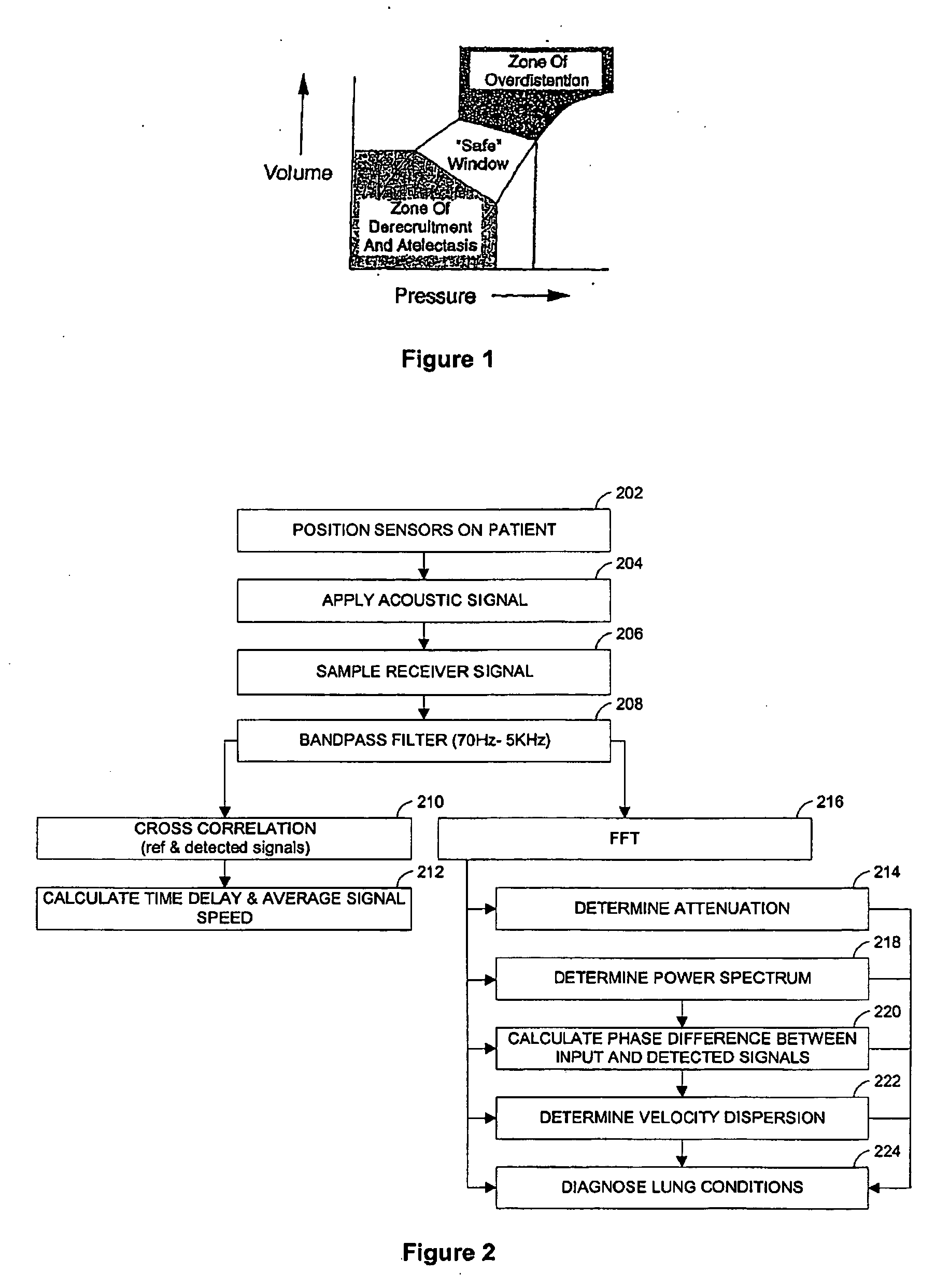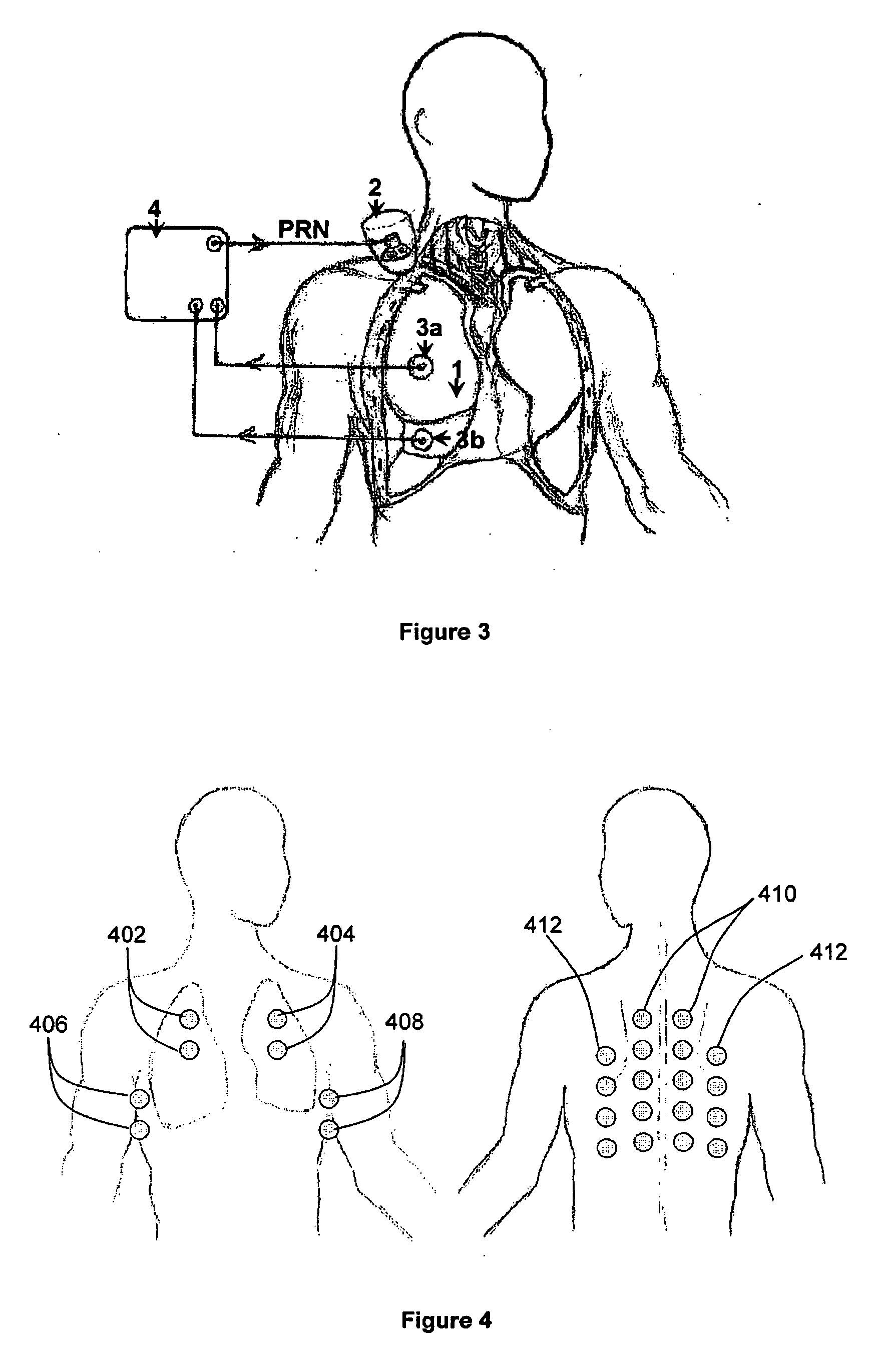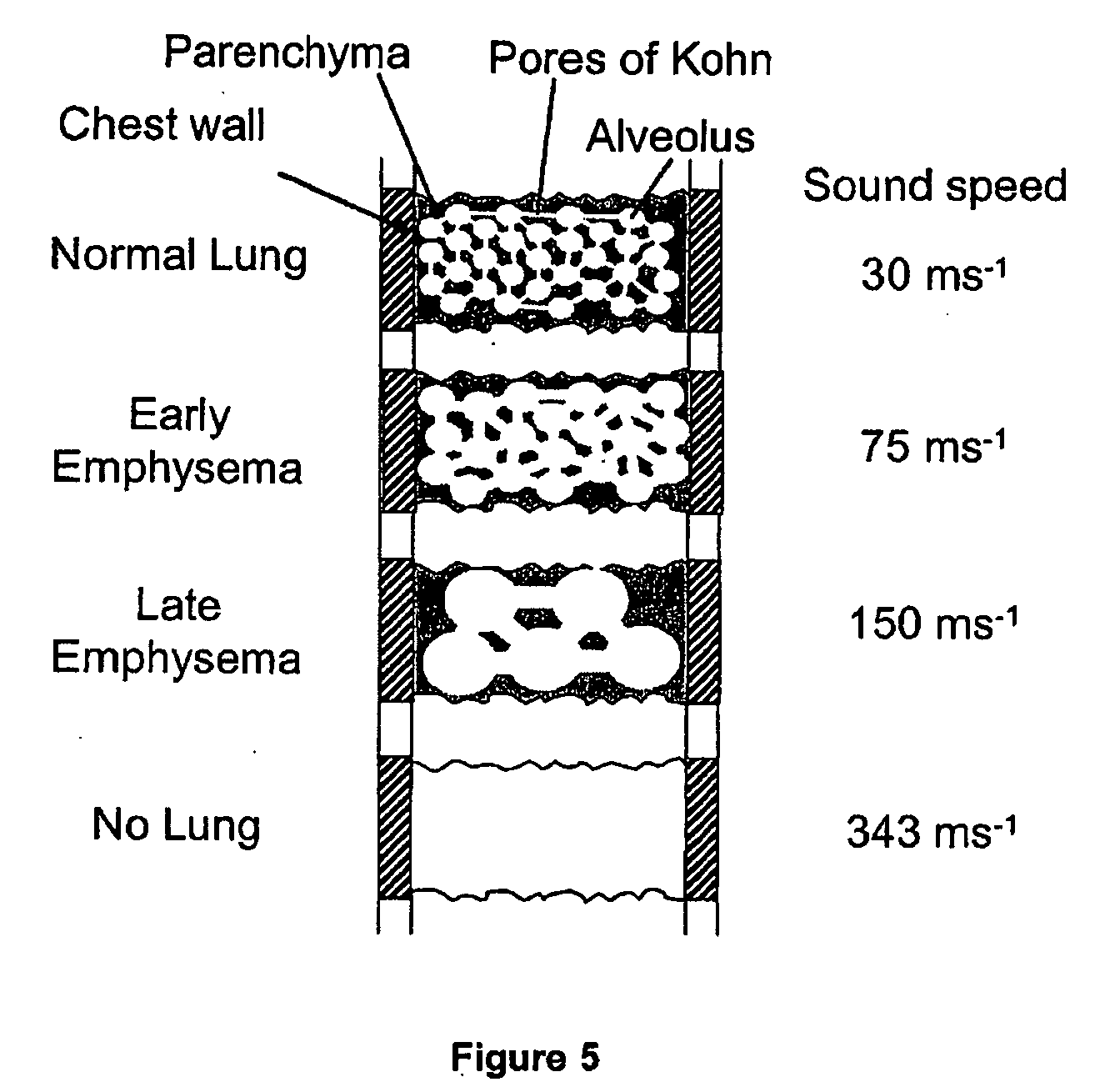Apparatus and method for lung analysis
a technology of apparatus and lung, applied in the field of apparatus and lung analysis, can solve the problems of requiring equipment which is bulky and expensive to install, requires a large amount of equipment, and is generally expensive to operate, and achieves reliable and reproducible transducer positioning, improved coupling, and improved coupling
- Summary
- Abstract
- Description
- Claims
- Application Information
AI Technical Summary
Benefits of technology
Problems solved by technology
Method used
Image
Examples
Embodiment Construction
[0065] Characteristics of biological tissues can be determined by measuring the velocity and attenuation of a sound as it propagates through the tissue. This can be achieved by introducing a sound to a particular location or position on the tissue, allowing the sound to propagate through the tissue and measuring the velocity and / or attenuation with which the sound travels from its source to its destination, the destination including a receiver which is spatially separated from the sound source.
[0066] It is particularly desirable that the tissue is porous comprising a composite structure made up of tissue and gas, or has regions of high and low density. Preferably the tissue is of the respiratory system. More preferably the tissue is lung tissue.
[0067] Referring to FIG. 2, in a method of determining the presence of COPD in a lung, in a step 204, an acoustic signal is applied to the lung. In a step 206, the signal is detected after it has passed through at least part of the lung. In...
PUM
 Login to View More
Login to View More Abstract
Description
Claims
Application Information
 Login to View More
Login to View More - R&D
- Intellectual Property
- Life Sciences
- Materials
- Tech Scout
- Unparalleled Data Quality
- Higher Quality Content
- 60% Fewer Hallucinations
Browse by: Latest US Patents, China's latest patents, Technical Efficacy Thesaurus, Application Domain, Technology Topic, Popular Technical Reports.
© 2025 PatSnap. All rights reserved.Legal|Privacy policy|Modern Slavery Act Transparency Statement|Sitemap|About US| Contact US: help@patsnap.com



